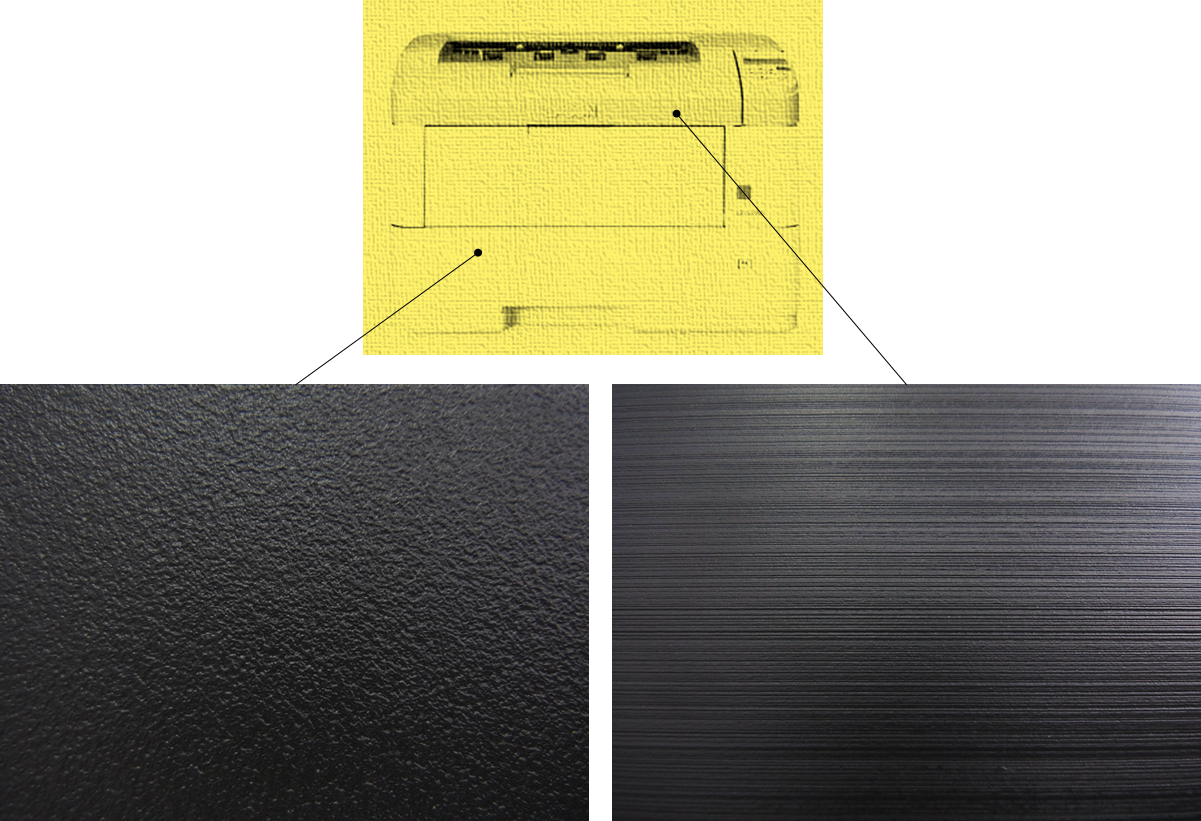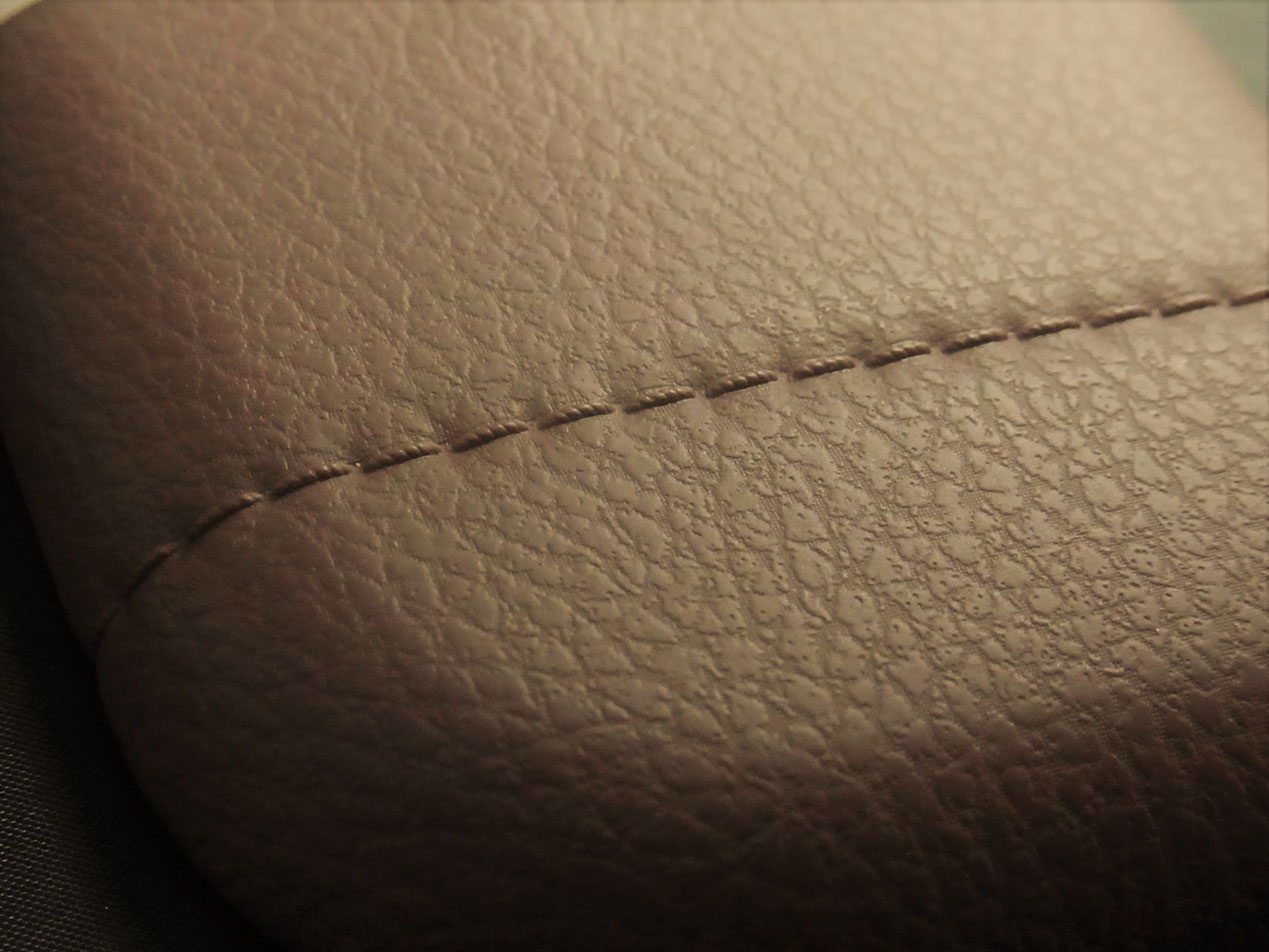
What is texturing?
This is one of metal microfabrication methods to create patterns on metal furfaces. It is also called chemical etching because the metal is mainly dissolved and removed by chemicals.
In the days when cloth was not yet available, the tanning technique was developed to make the raw hides of animals more practical. The term "Shibo" refers to the process of wrinkling by squeezing and straining, and the term "Shibo" is derived from the fact that this pattern is called "Shibo".
In the case of plastic molding tools , not only leather patterns, but also wood patterns, slate patterns, stipple patterns and geometric patterns are all referred to as "Shibo English terms such as texturing, graining and engraving are also used.
There are several technologies for applying patterns to surfaces of molded products. Texturing have the following characteristics in comparison to electroforming, EDM and precision casting.
- ■ Complex and fine patterns can be easily obtained, which can not be achieved by machining.
- ■ A high degree of freedom in selecting patterns.
- ■ Short lead time.
- ■ It is possible to rework or repair accidental defalut or engineering changes.
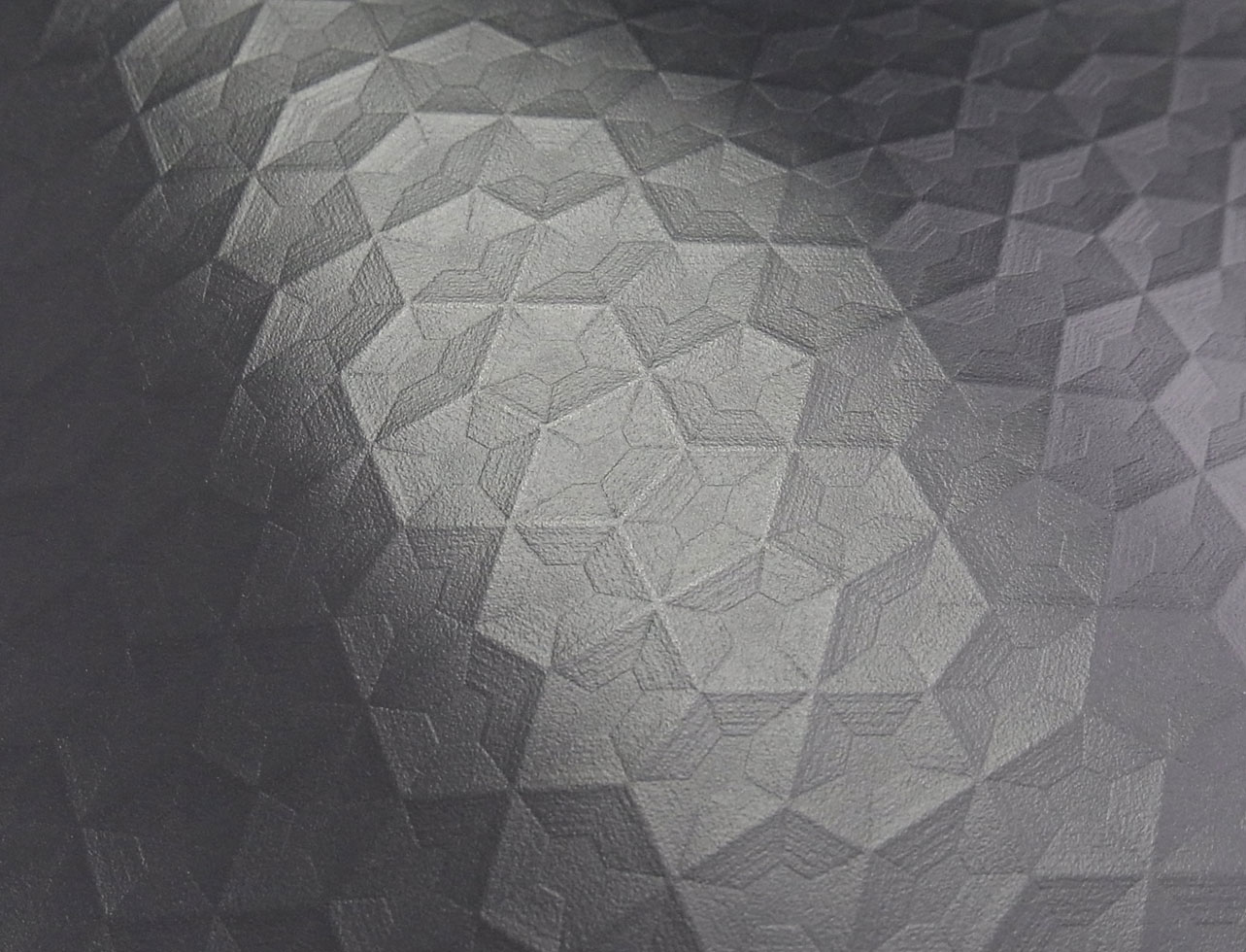
Design
Plastic products without grain look slippery and cheap. If you touch a computer monitor or keyboard, for example, you can feel the subtle roughness of the surface. Although it is only a slight roughness, there is a big difference in the impression people get from being it or not. matt finish are often used for home appliances and office automation equipment, while leather patterns, geometric patterns, rock grains, wood grain, etc. are often used for automobiles and housing equipment to actively show off the texture patterns.
Functions
Surprisingly, the surface of plastic products is soft and easily scratched. With a texture finish surface, scratches are less likely to occur, or scratches are less noticeable. In addition, plastic products that would be slippery on a non-texture surface can be held firmly and easily with a textured finish. This is because the unevenness of the texture acts as resistance and prevents slipping. In the production of injection-molded products, it reduces weld lines and sink marks during molding and helps with mold release. It also helps improve productivity in terms of quality, delivery and cost.
Environment
By applying a texture finish, it is possible to produce products that do not require painting on the surface of the molded product. if it doesn't use painting, there is no organic solvents that is contained in the paint. The Texture process also contributes to the creation of environmentally friendly products.
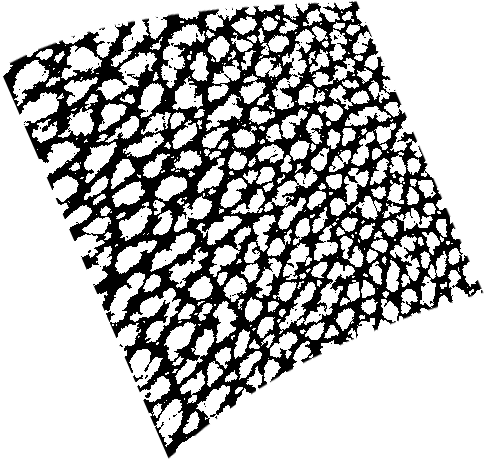 1st print
1st print
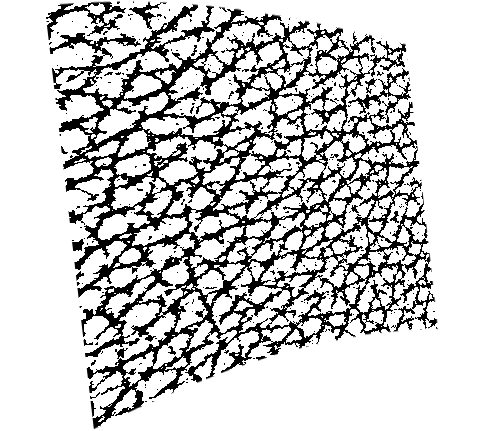 2nd print
2nd print
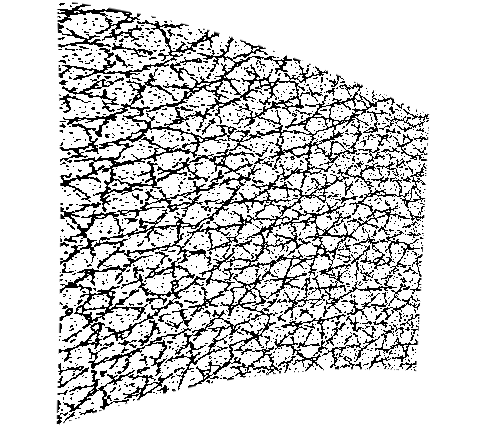 3rd print
3rd print
Molds and Products
On the left is a mold, and on the right is a molded product. The texture pattern on plastic products in the hands of consumers is transferred from the mold by injection molding. Therefore, unevenness of the mold and the product are opposite. You can see how the lines of peaks and valleys are intertwined over and over again, and how the shadows that emerge from the complex undulations enrich the expression of the texture.
The depth (the distance from the top of the mountain to the bottom of the valley in the cross section of the mold) is about 120 microns, or 0.12mm. There is not a straight line from the top of the mountain to the bottom of the valley, and there are only a number of steps to represent the natural leather in the process of repeated corrosion. Therefore, the depth of processing depth per batch can range from only 5 microns to several tens of microns. A technician's eye for depths less than the thickness of a sheet of one peace of copy paper and the skill to control corrosion are not easy to acquire.
Early stage of texturing.
You can see the basic contours of the texture, but it is still far from natural leather as it lacks dimensionality.
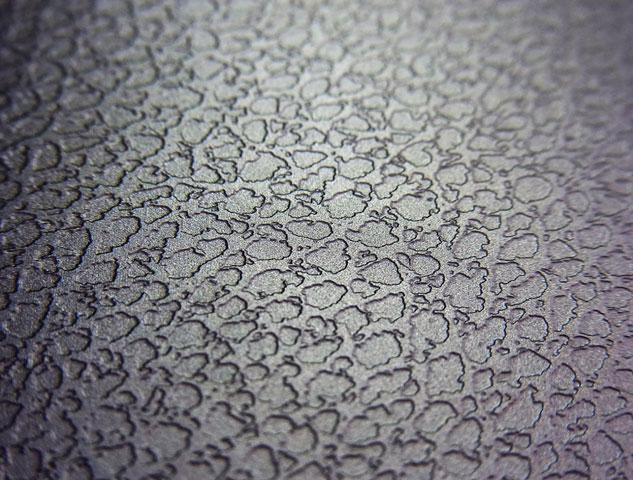
Mold 1st edition
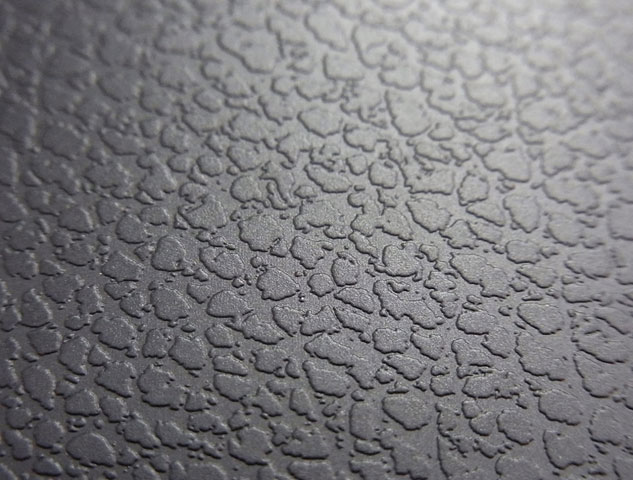
Molded product 1st print
Middle stage of texturing.
A fine pattern is added to more faithfully reproduce the wrinkles in natural leather. Compared to the early stage it has become more rounded like natural leather.
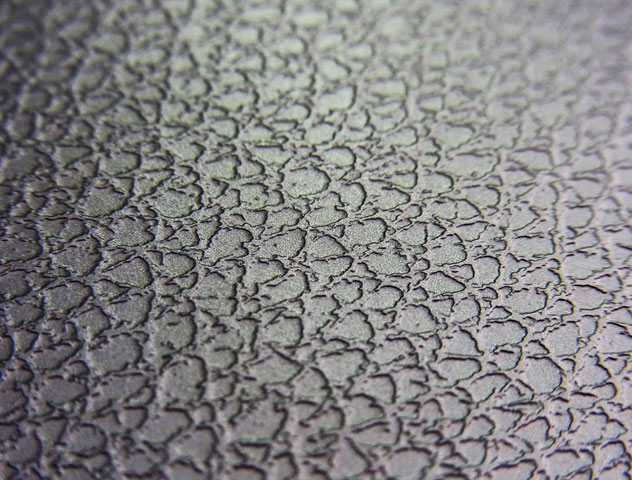
Mold 2nd edition
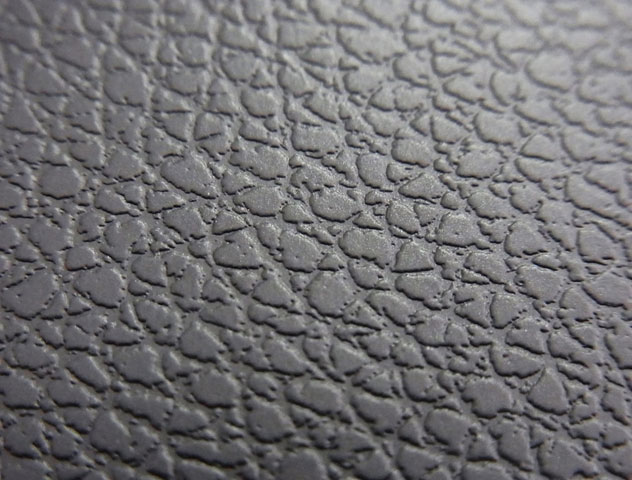
Molded product 2nd print
Final stage of texturing.
Fine wrinkles and pores can be seen. With the addition of natural leather's unique roundness, we have created a Japanese leather crease, which is said to be the world's best in terms of technique and quality. This is the completion of "the process of expressing natural leather with plastic," or in other words, the moment when "the product was breathed into life".
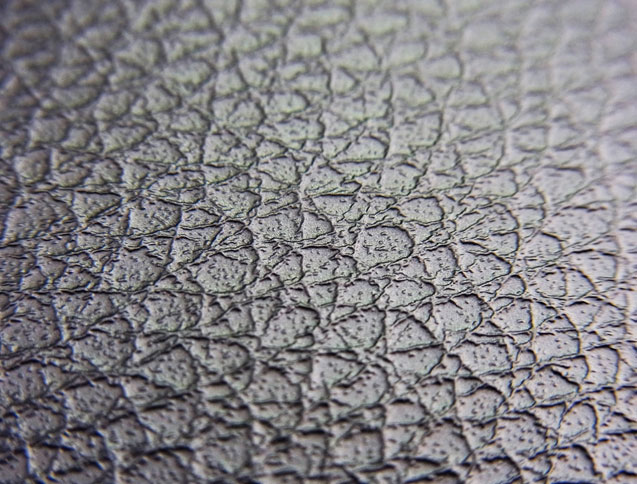
Mold 3rdedition
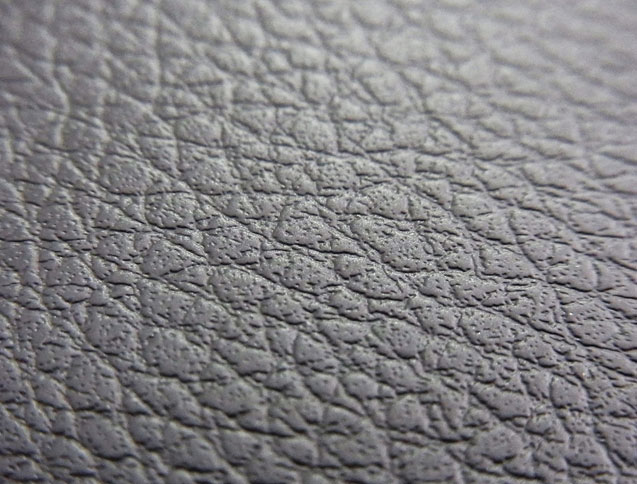
Molded product 3rd print
processing example
Automotive parts
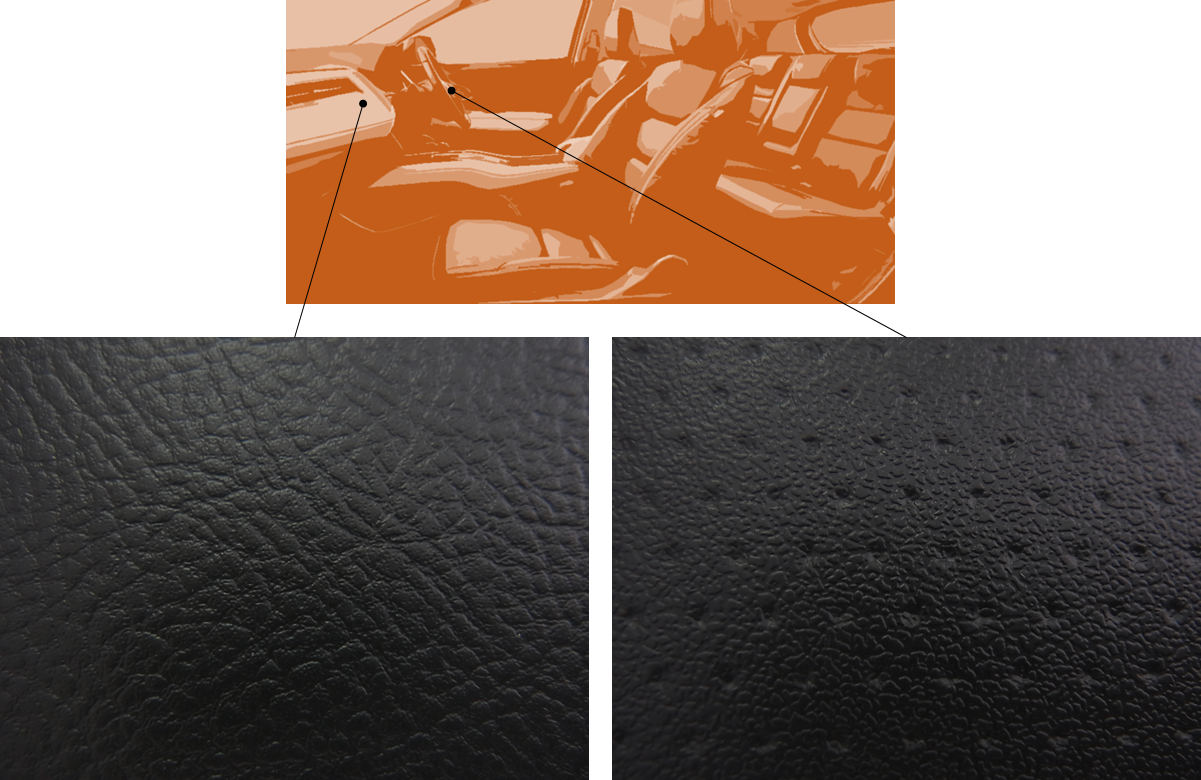
Housing materials
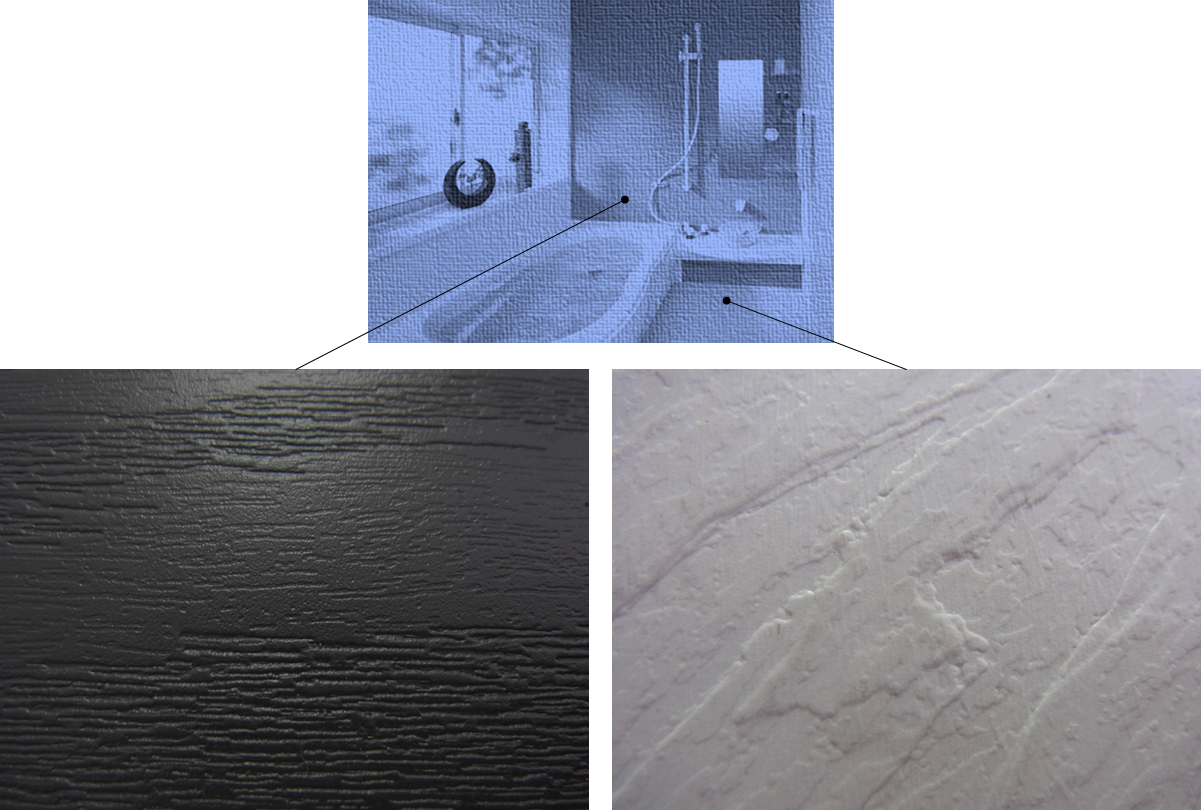
Electronics and home appliances
